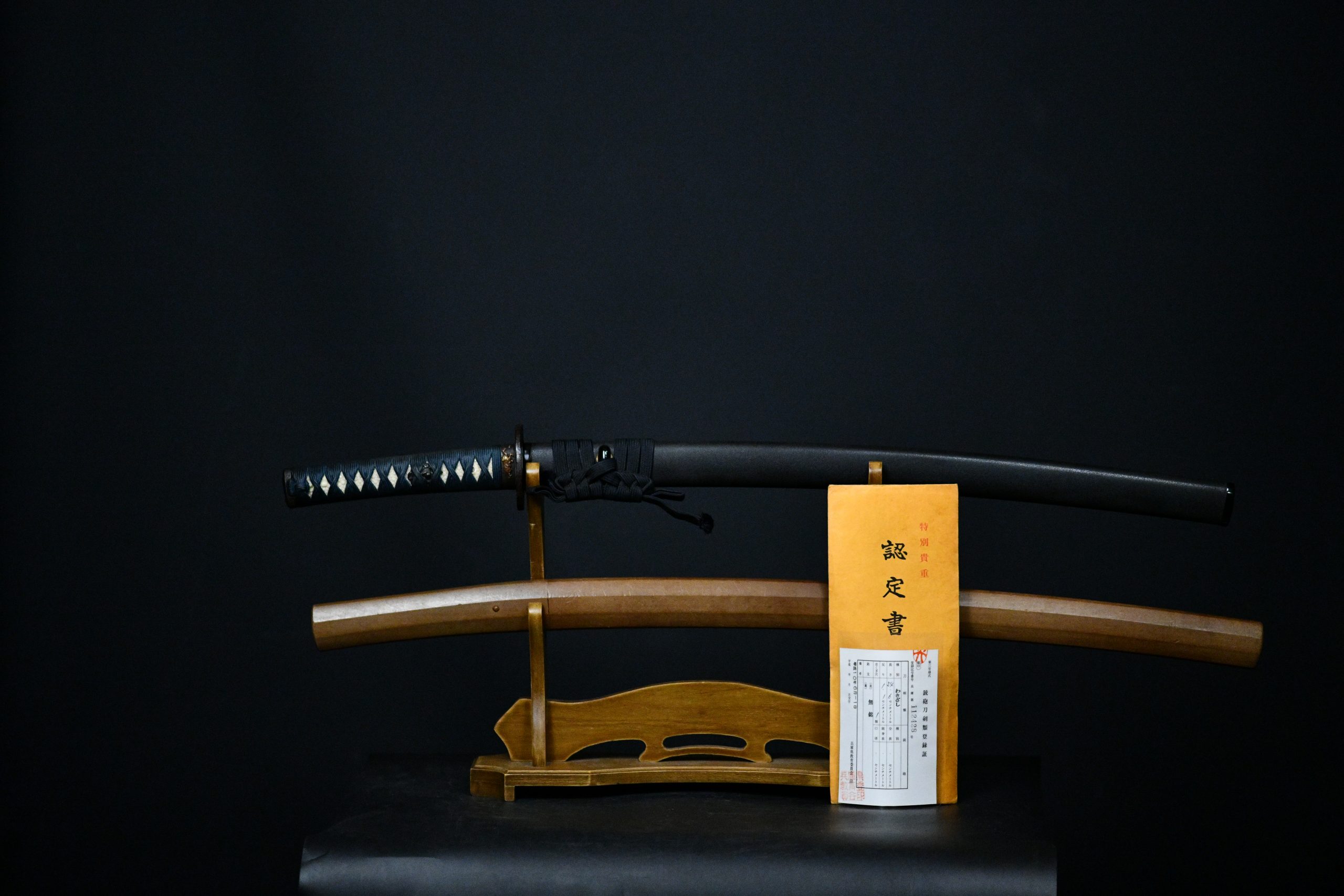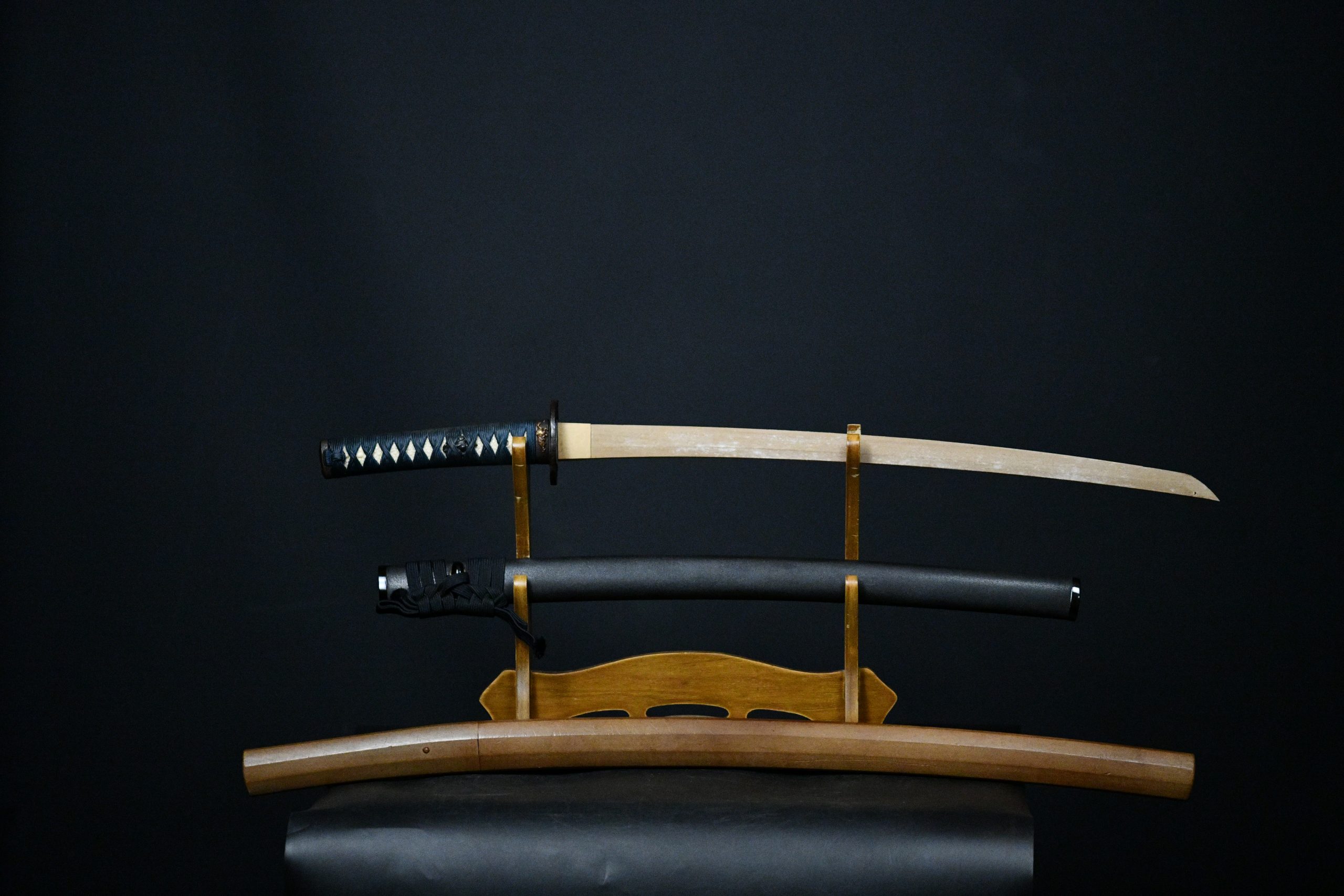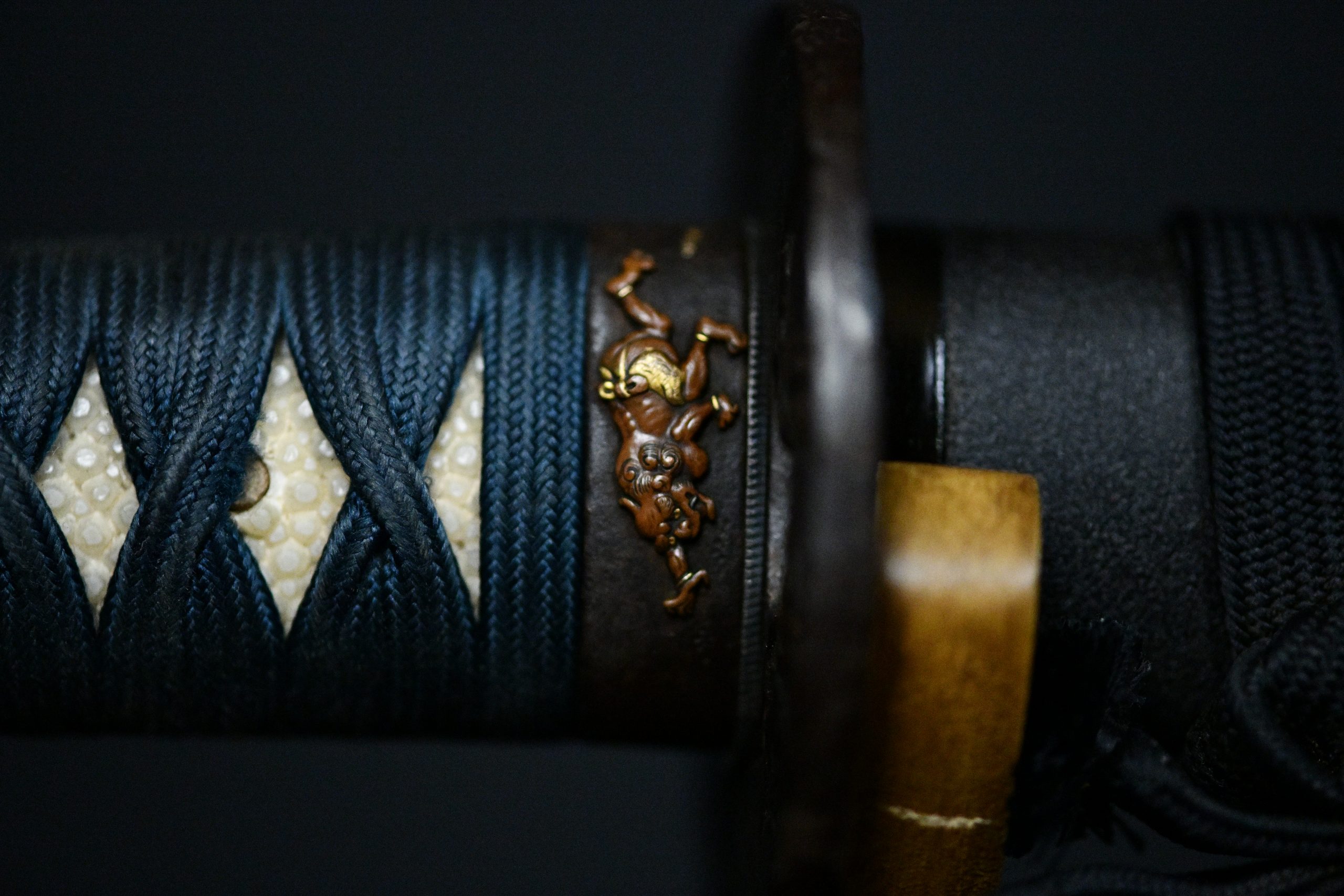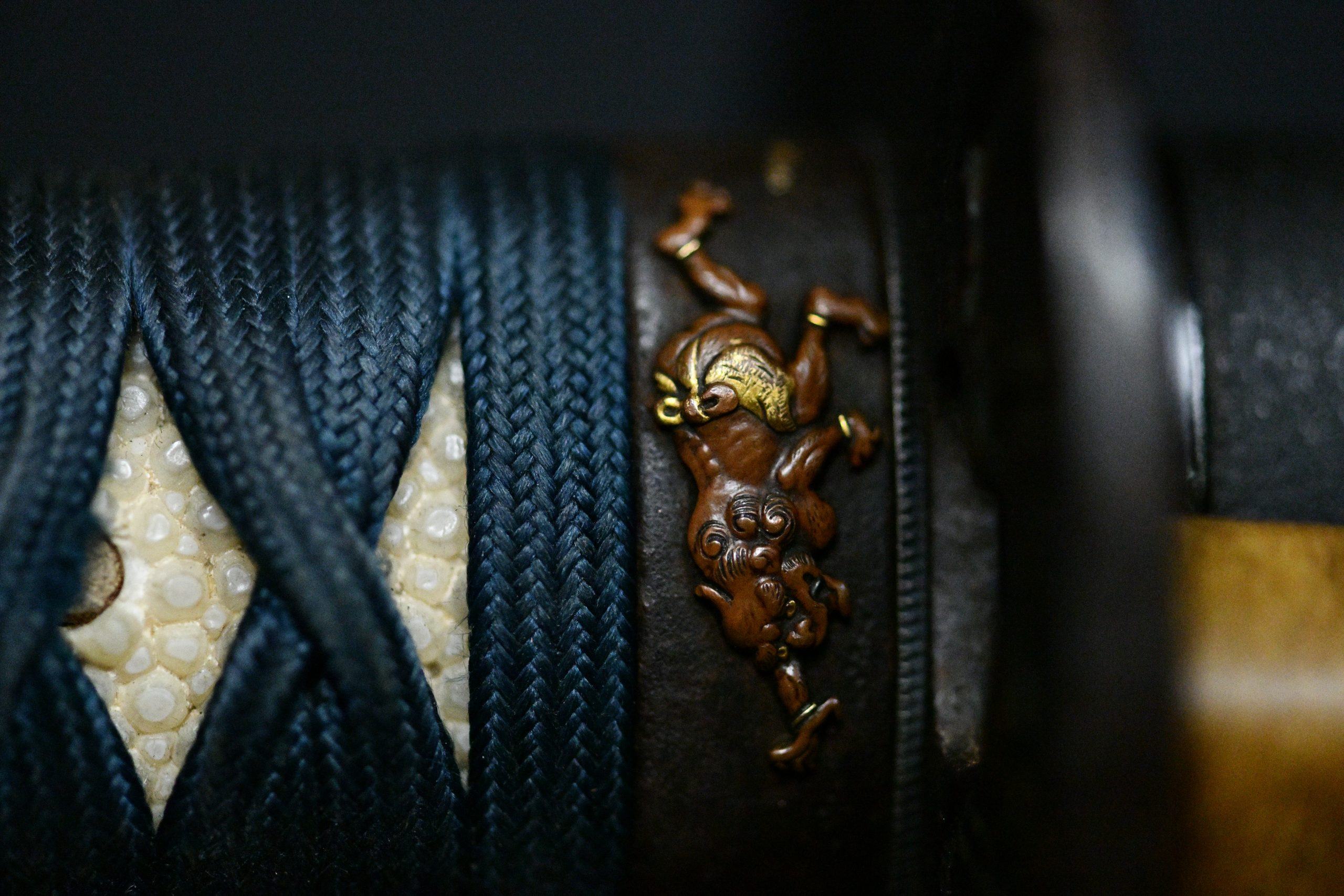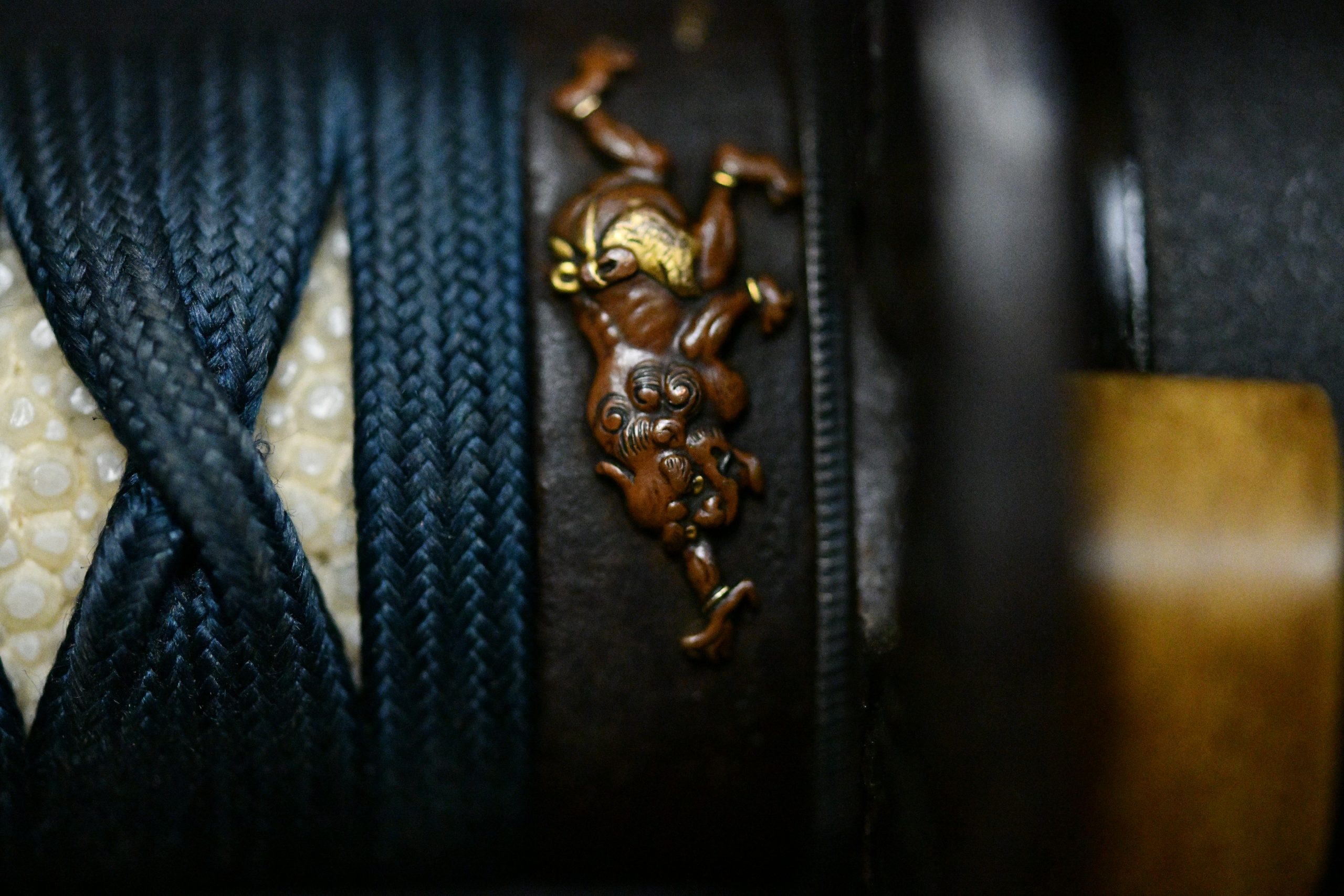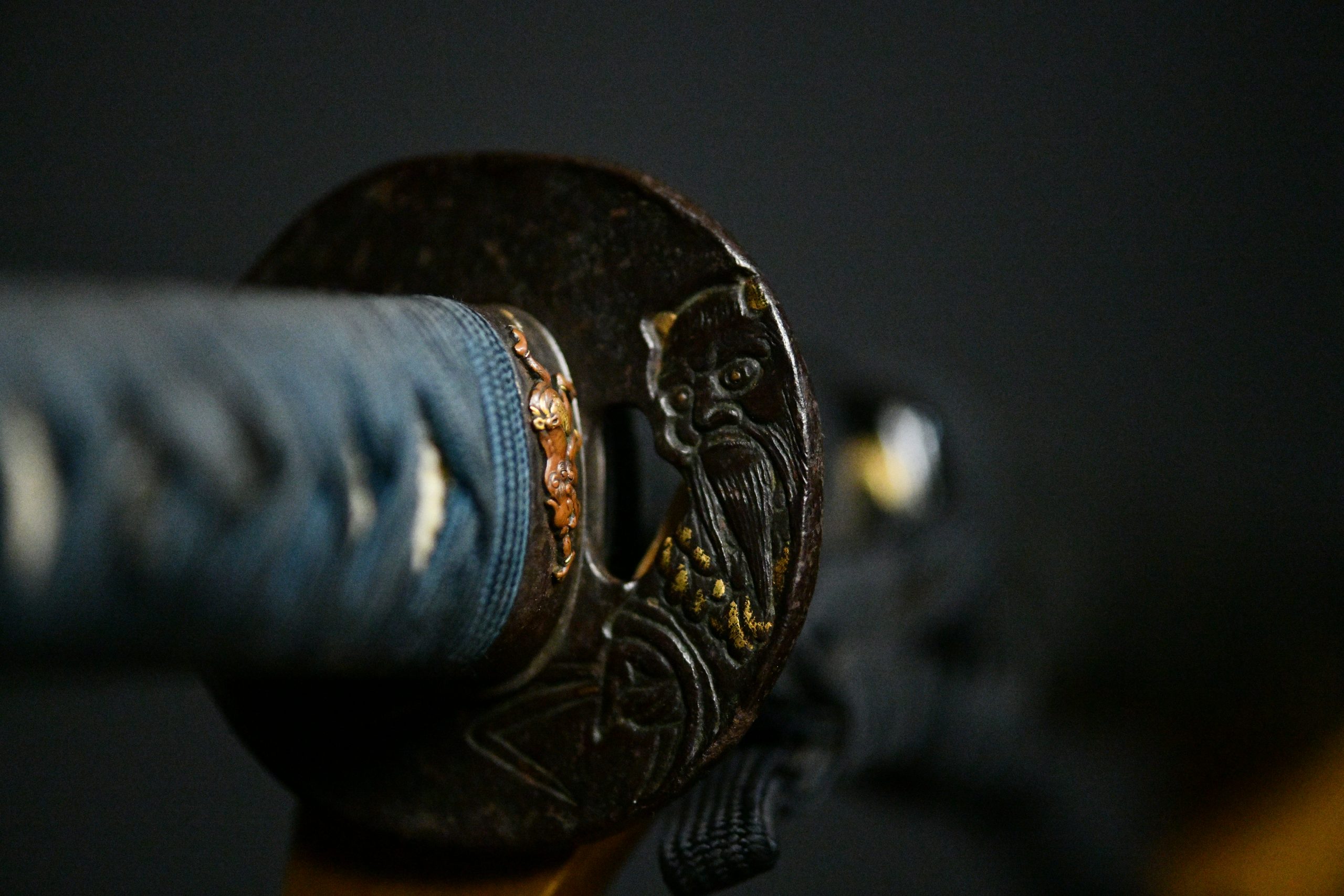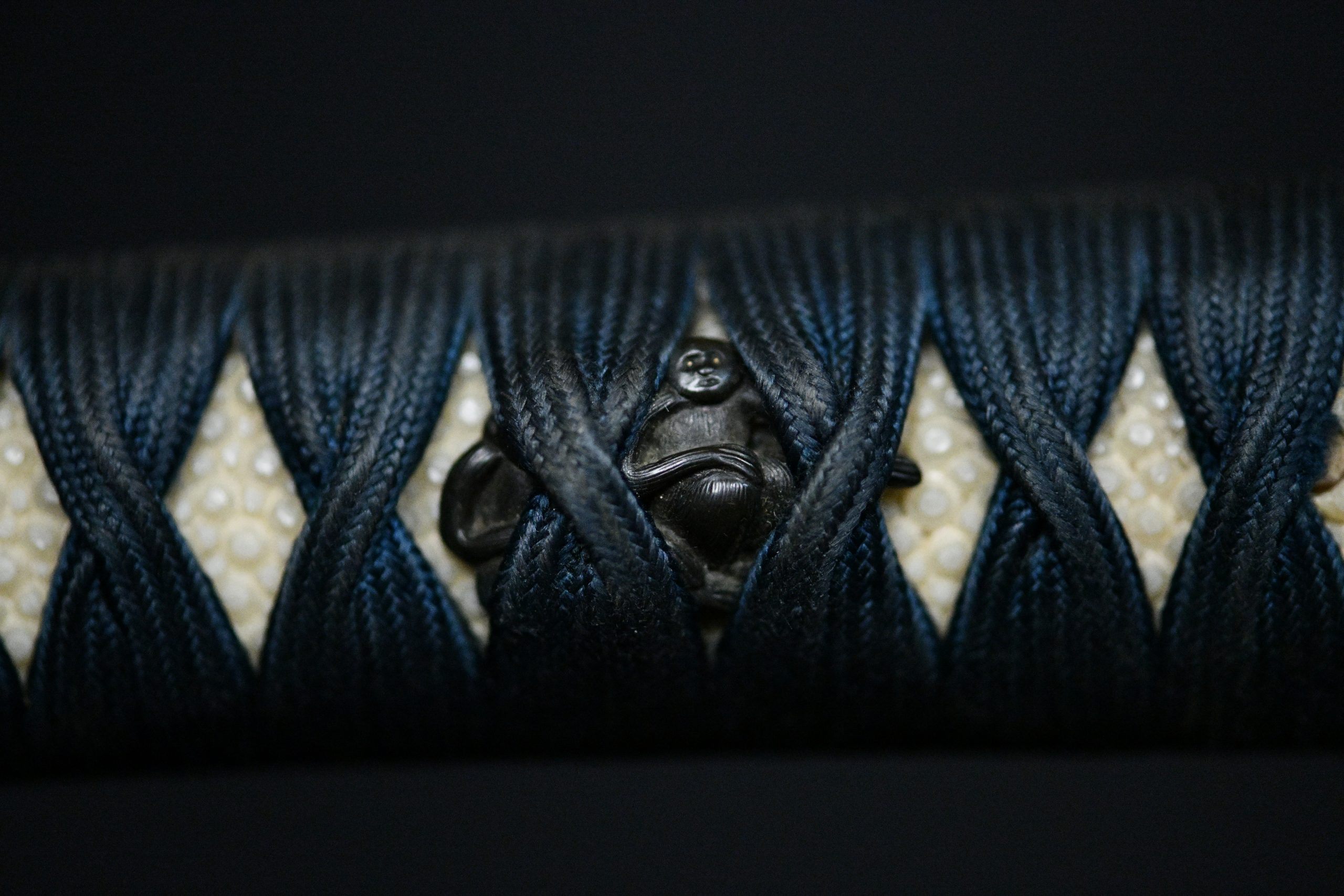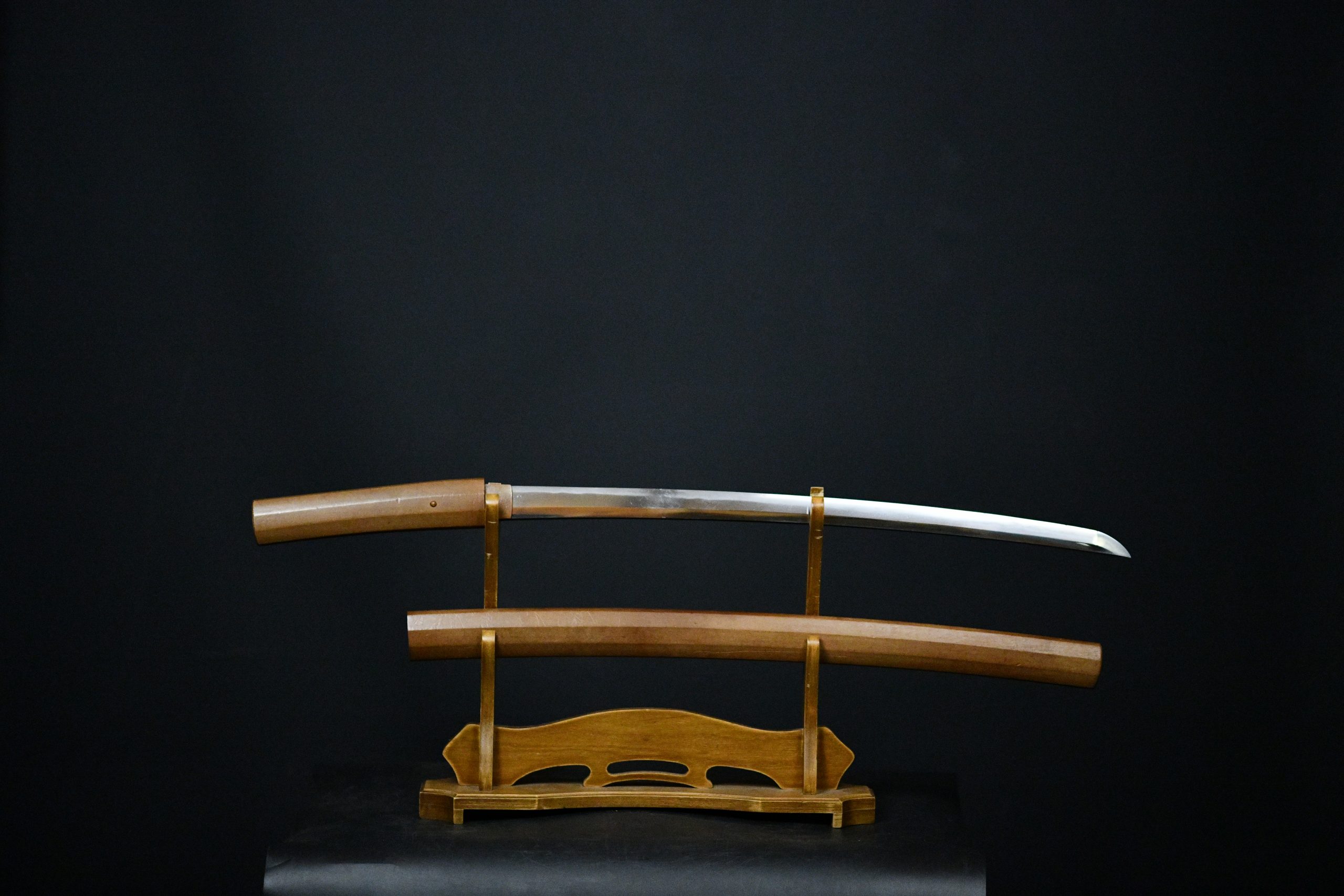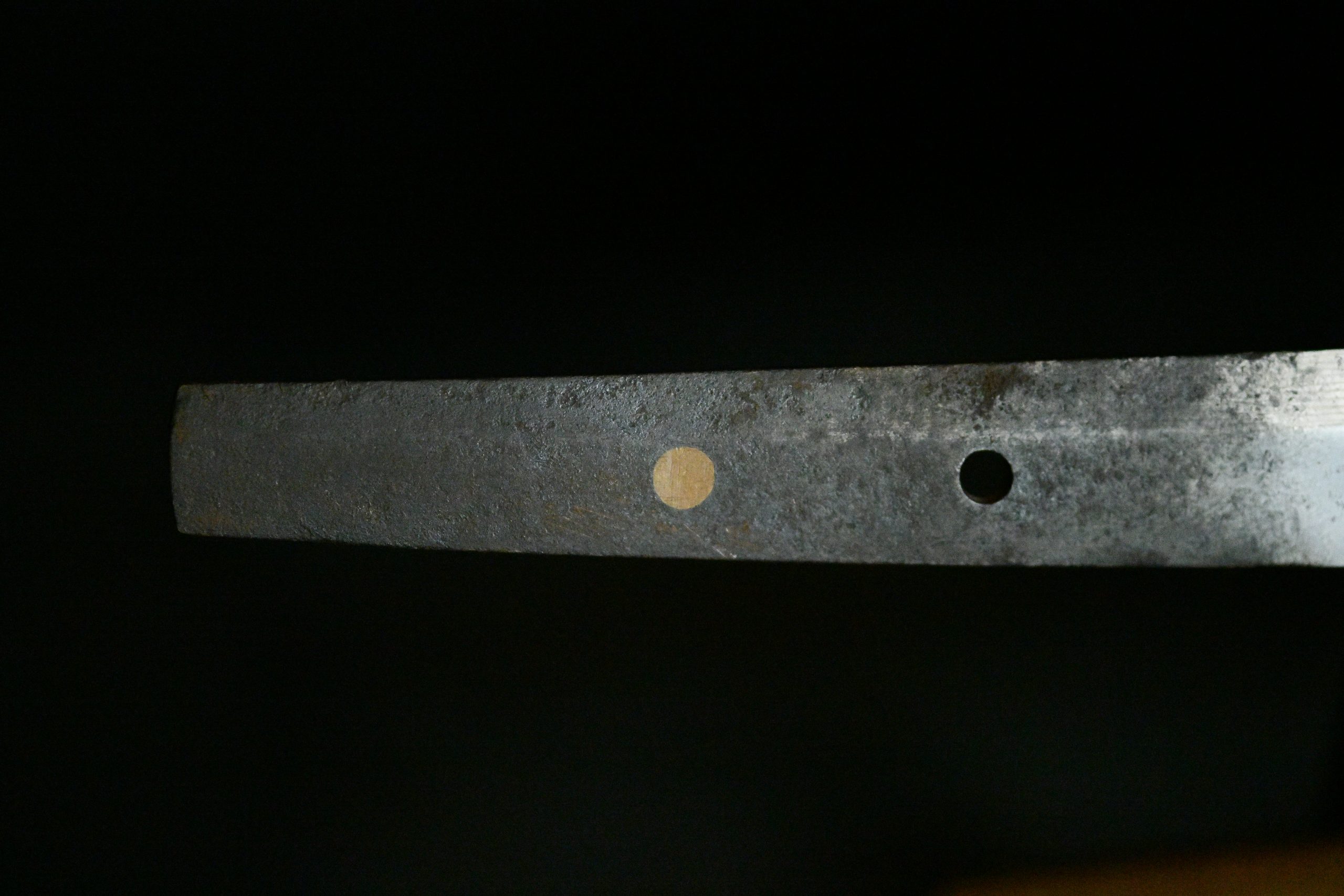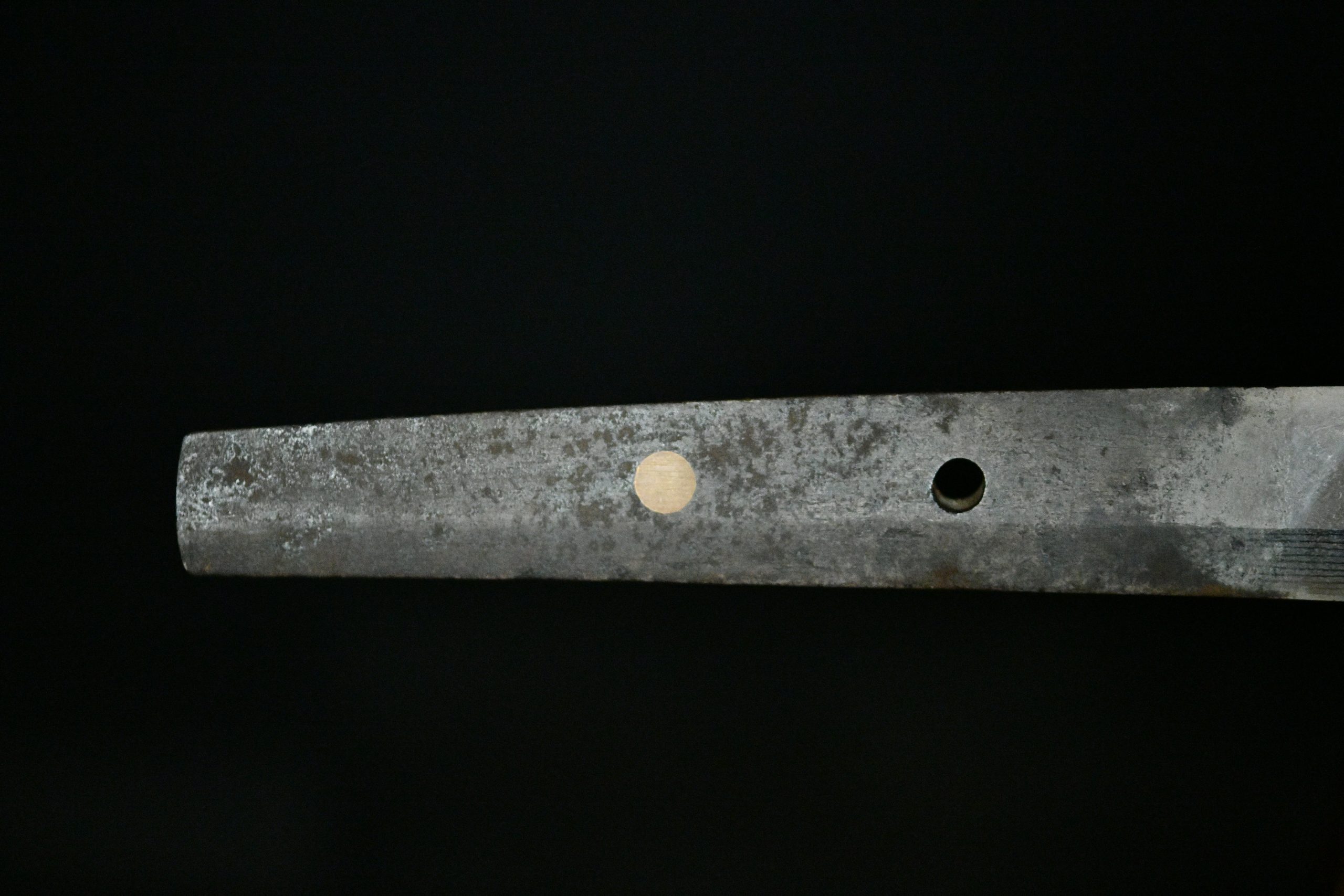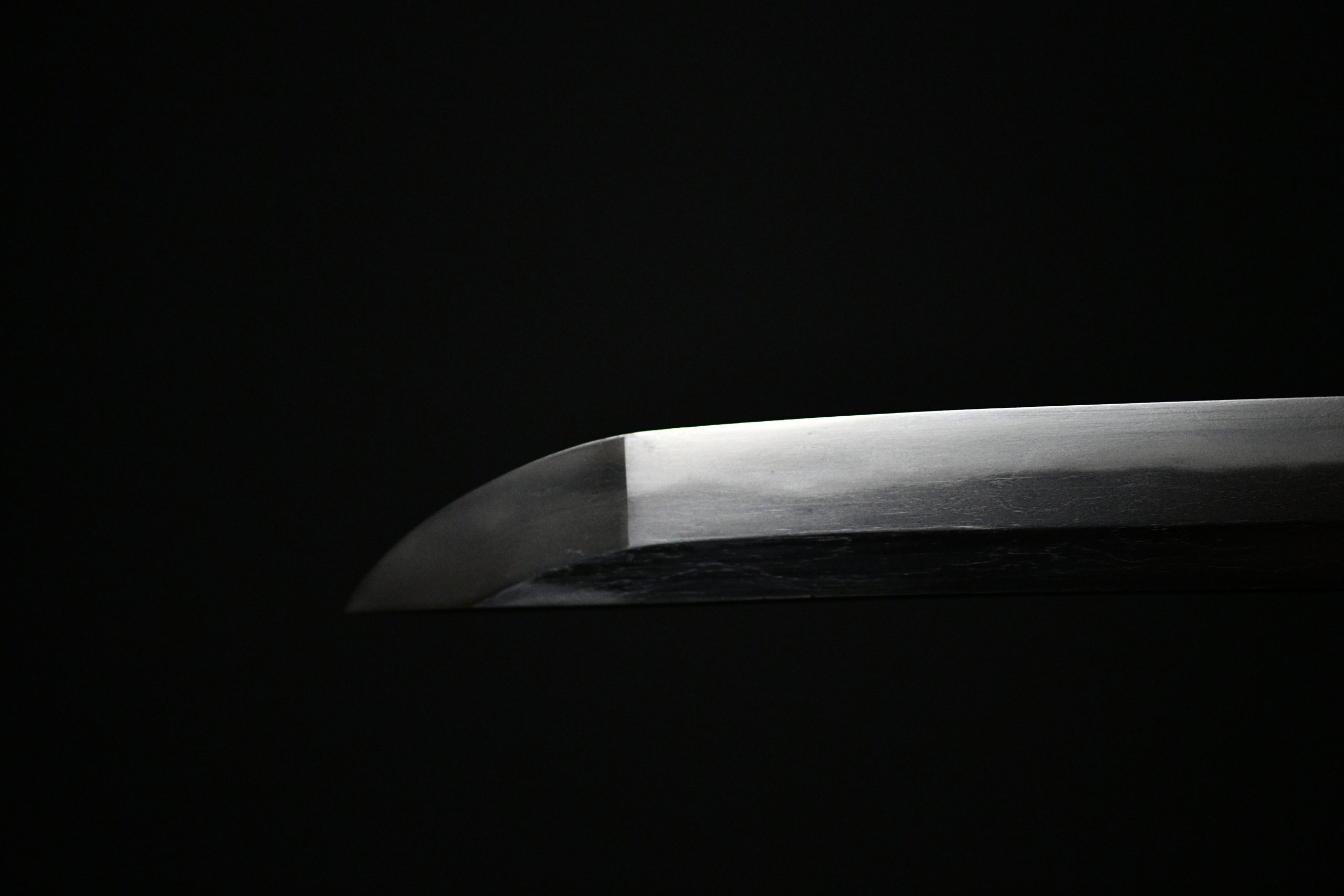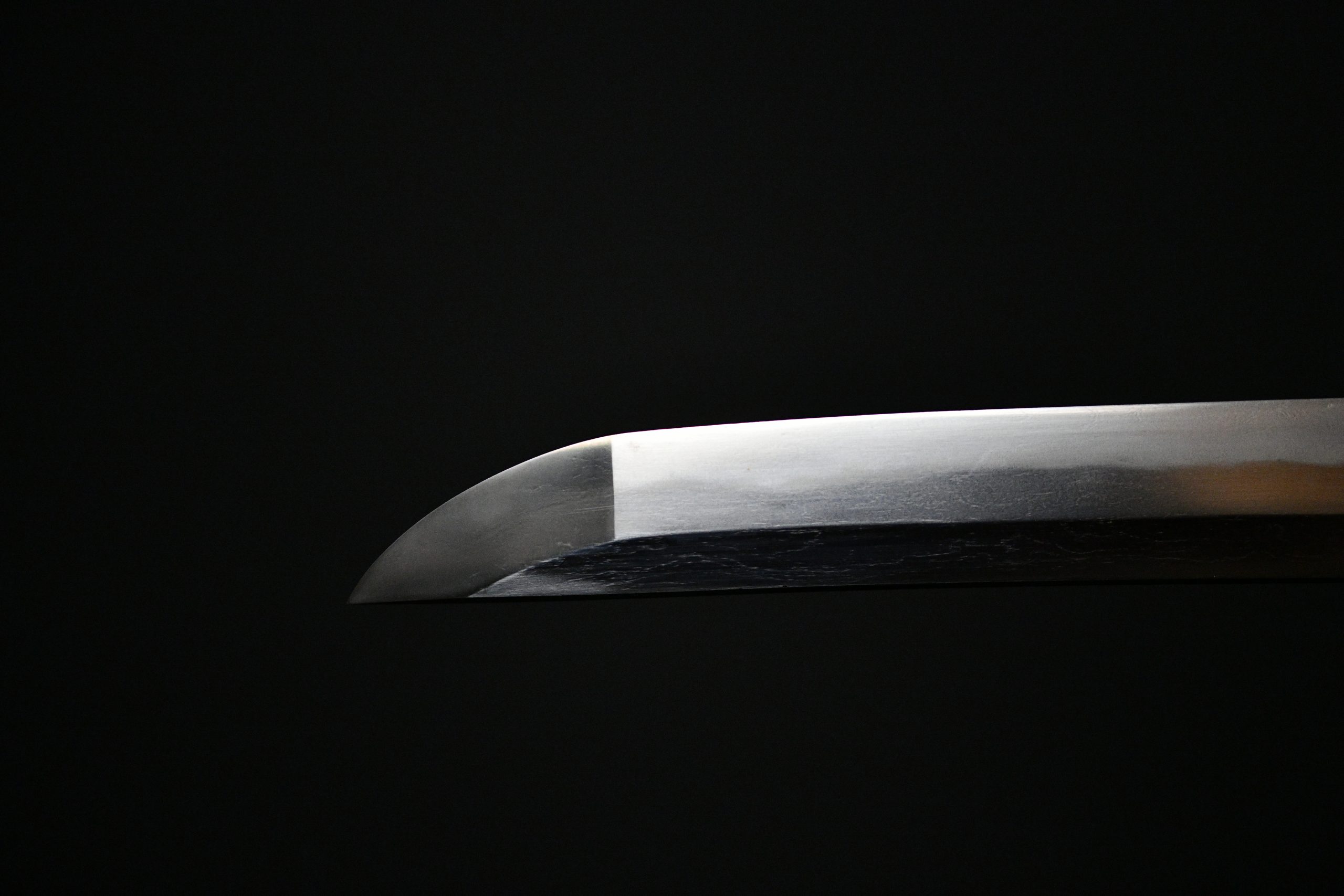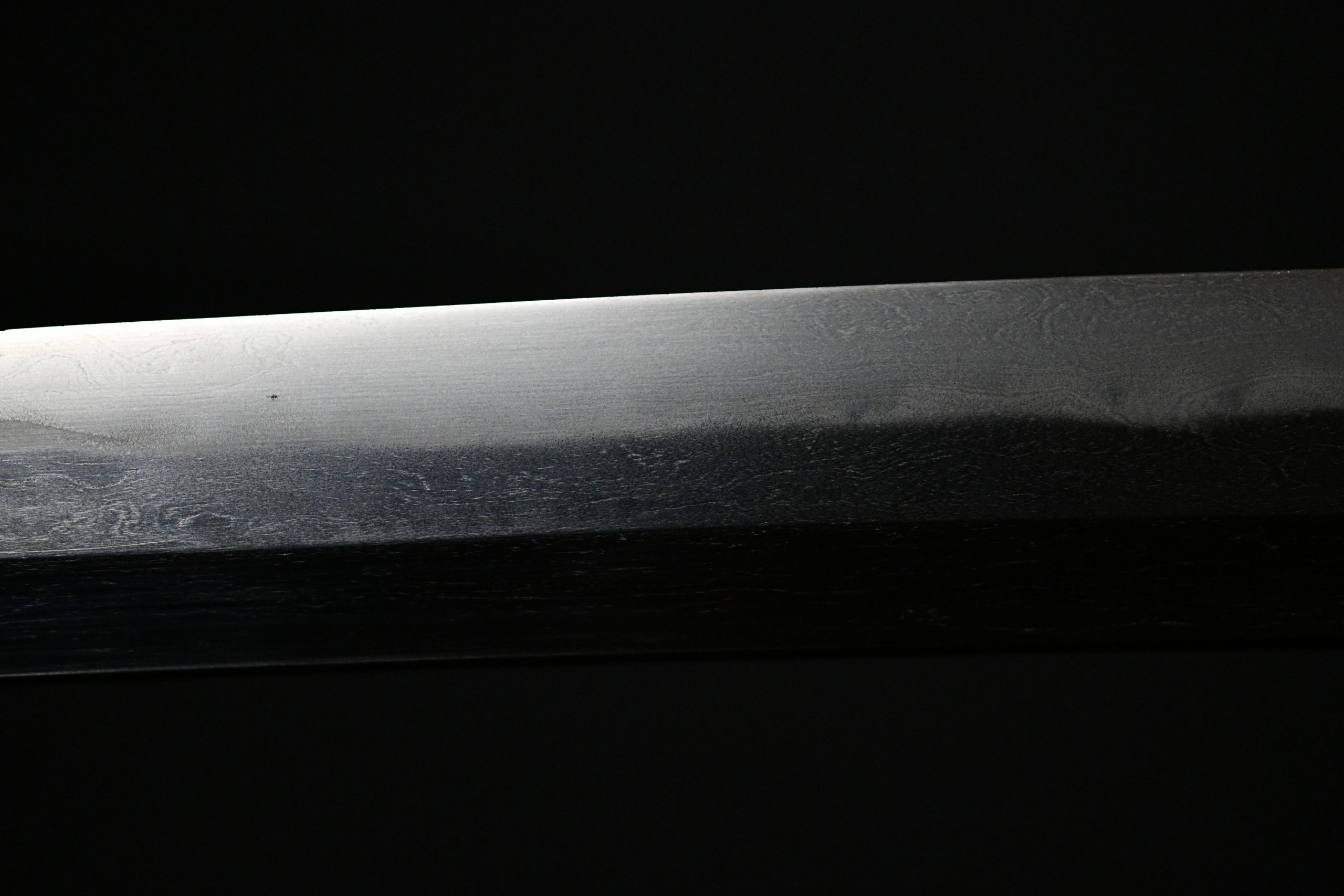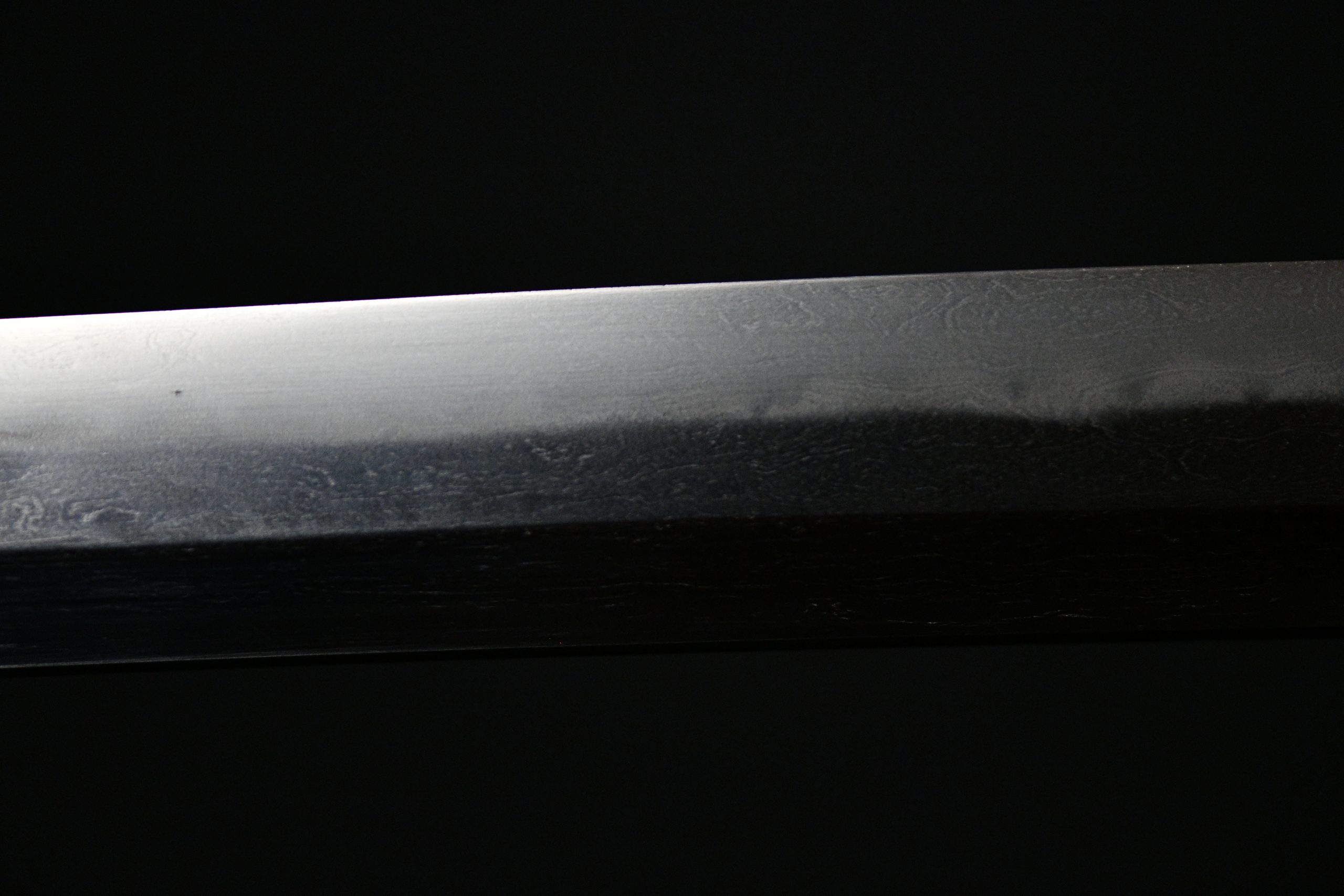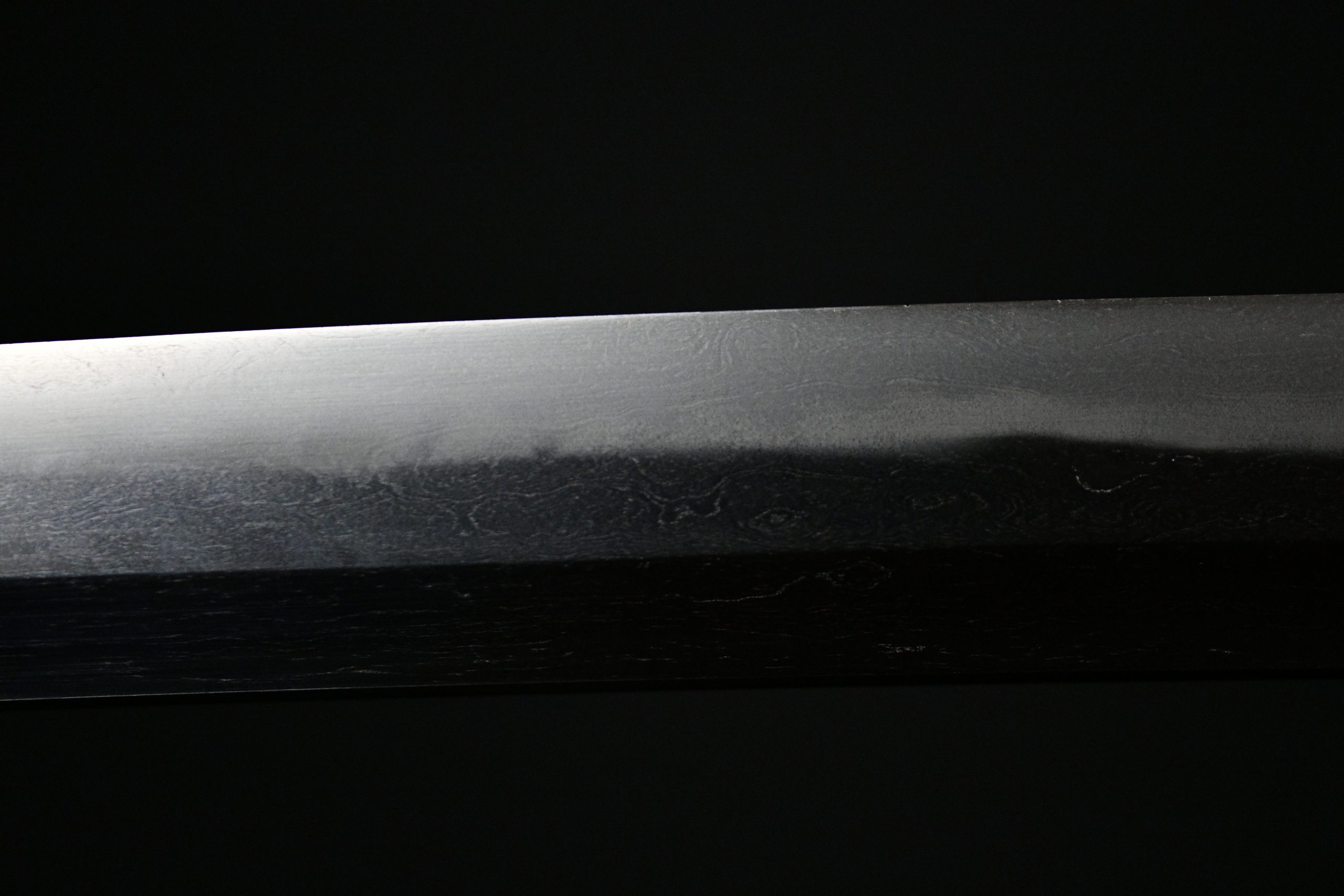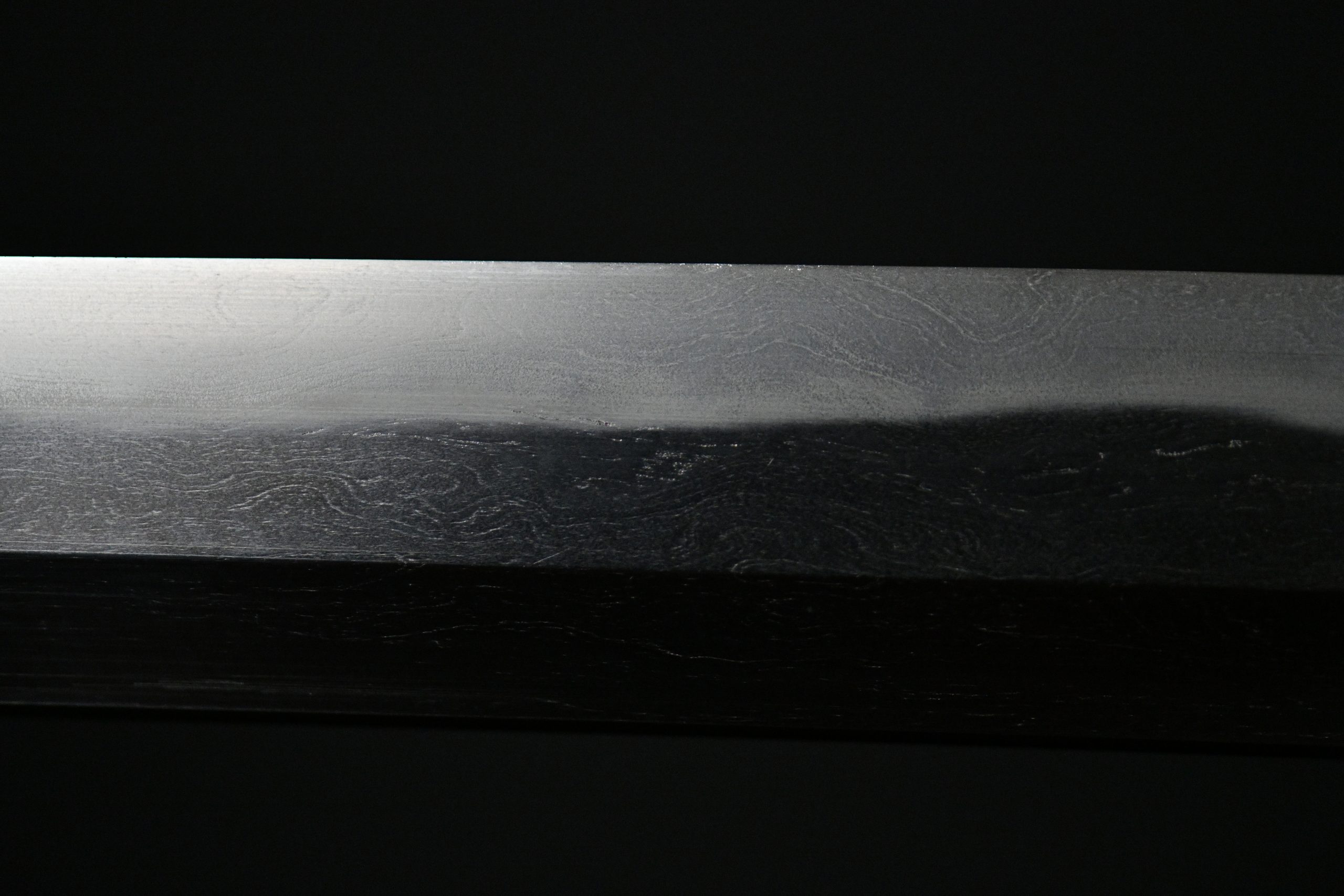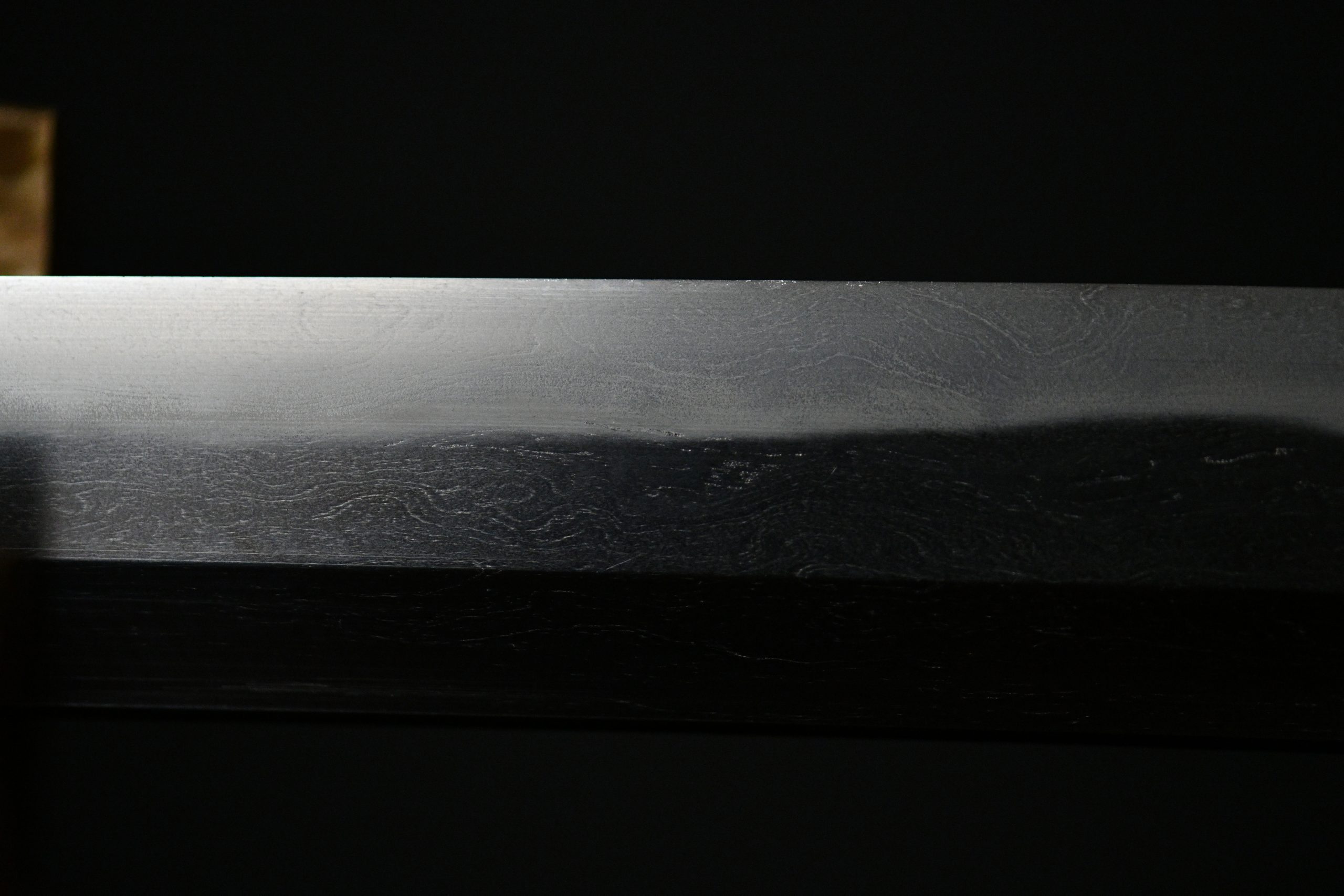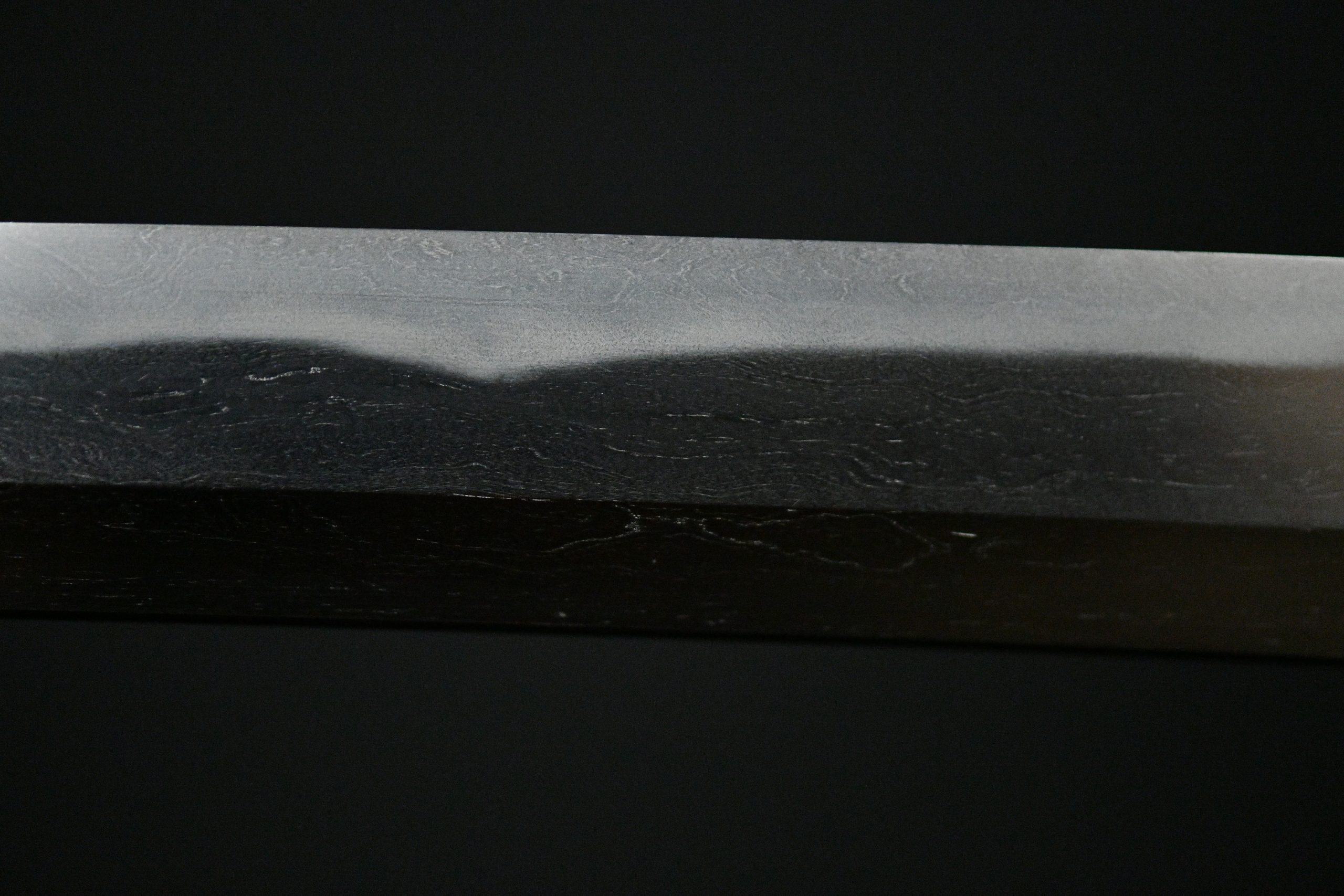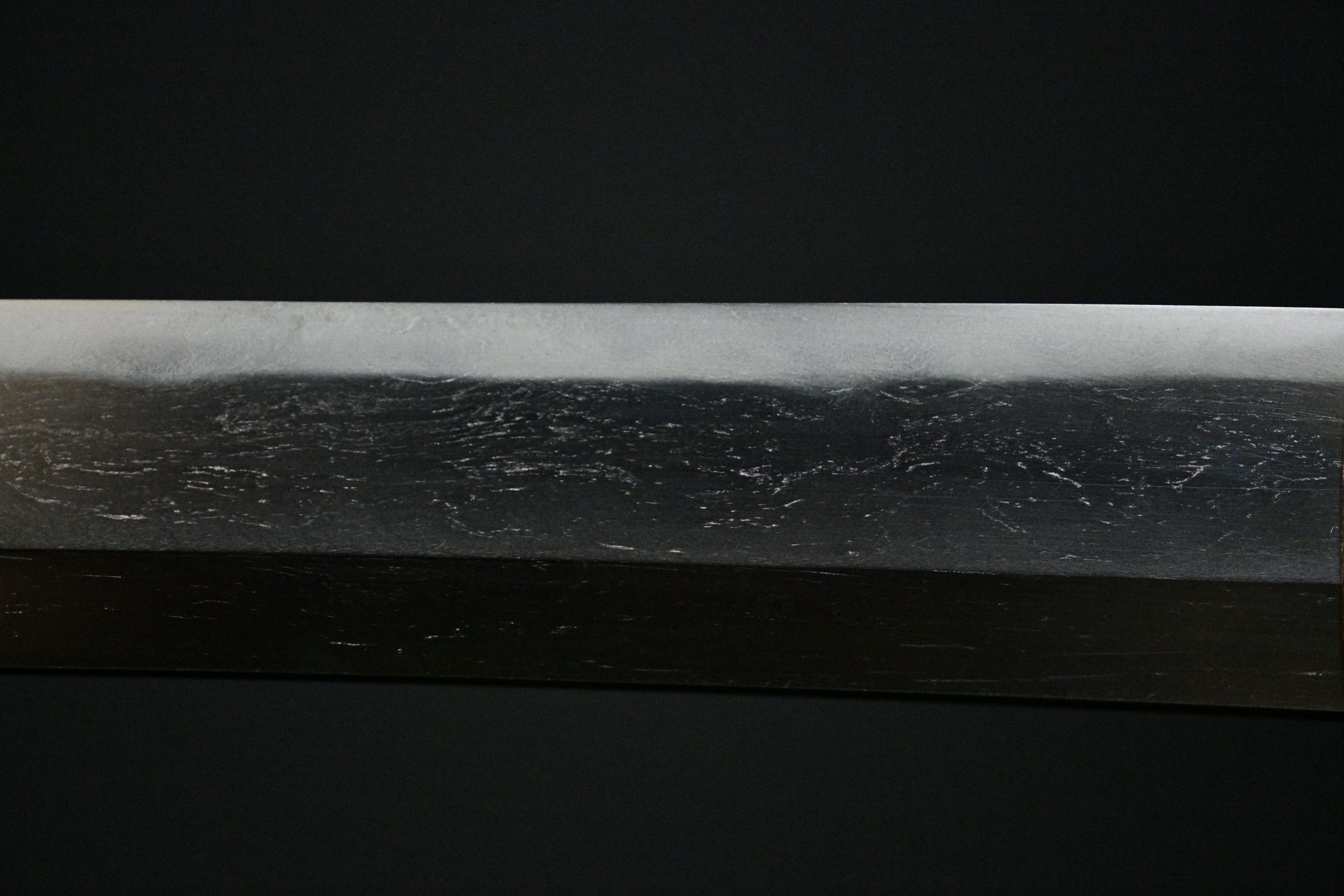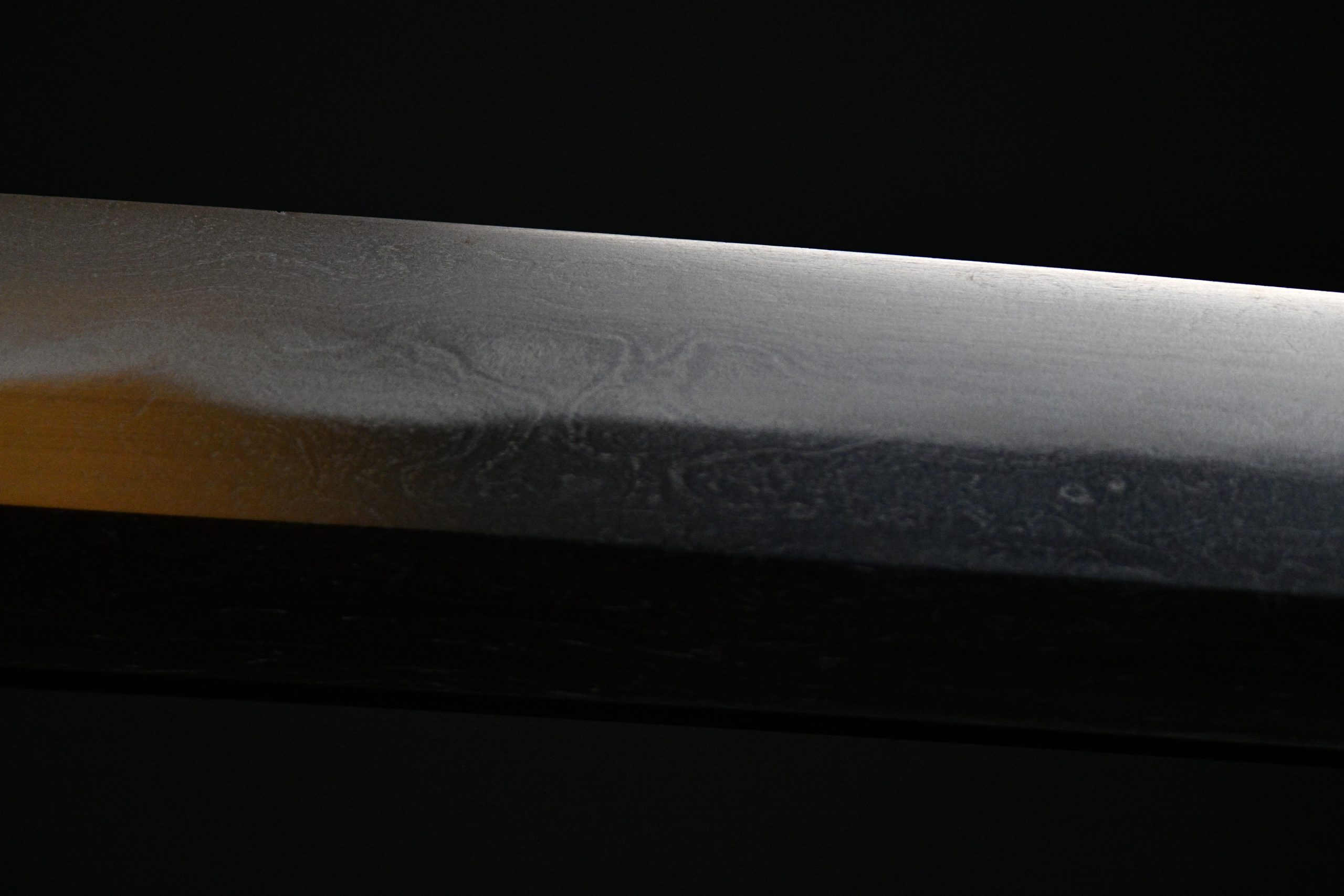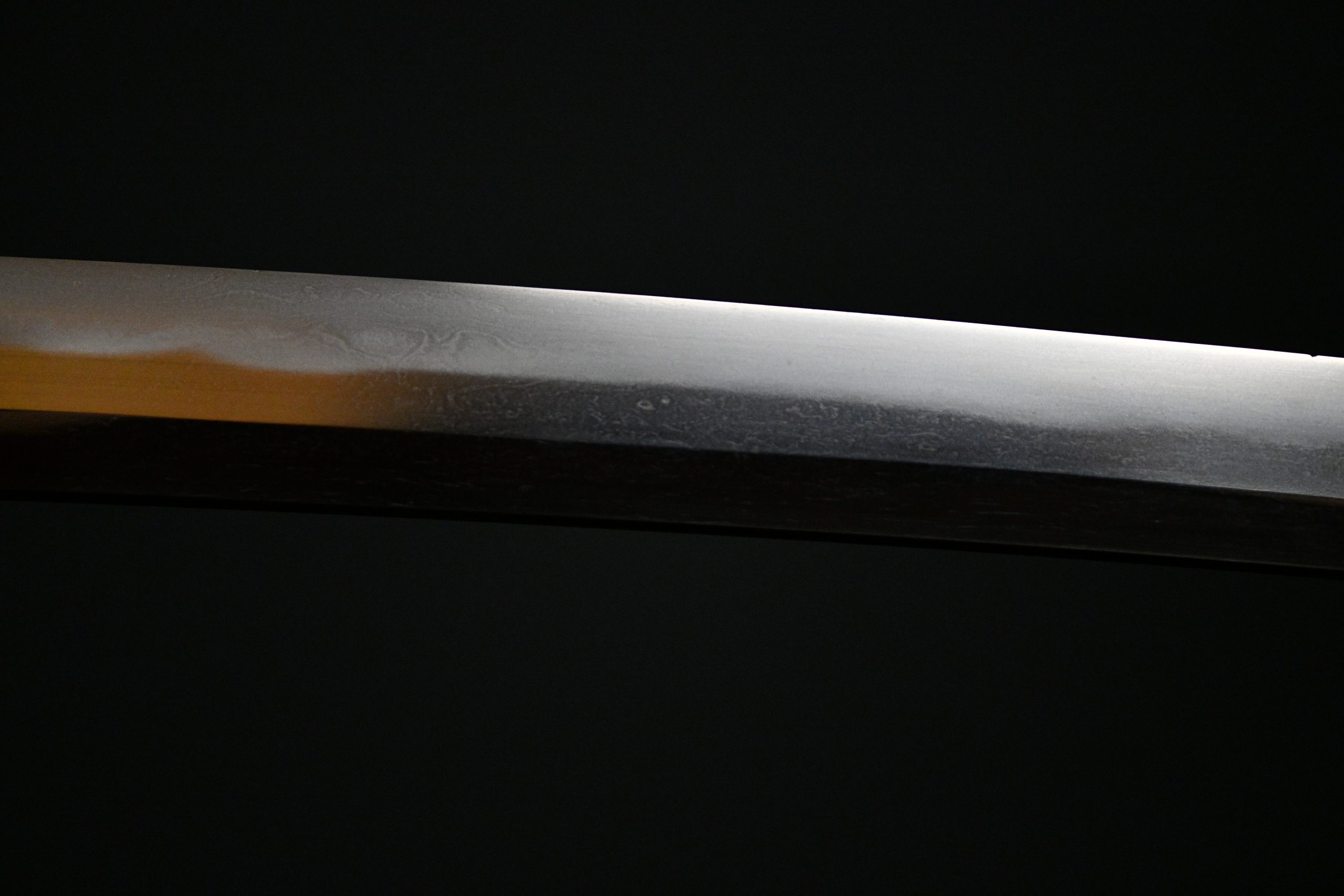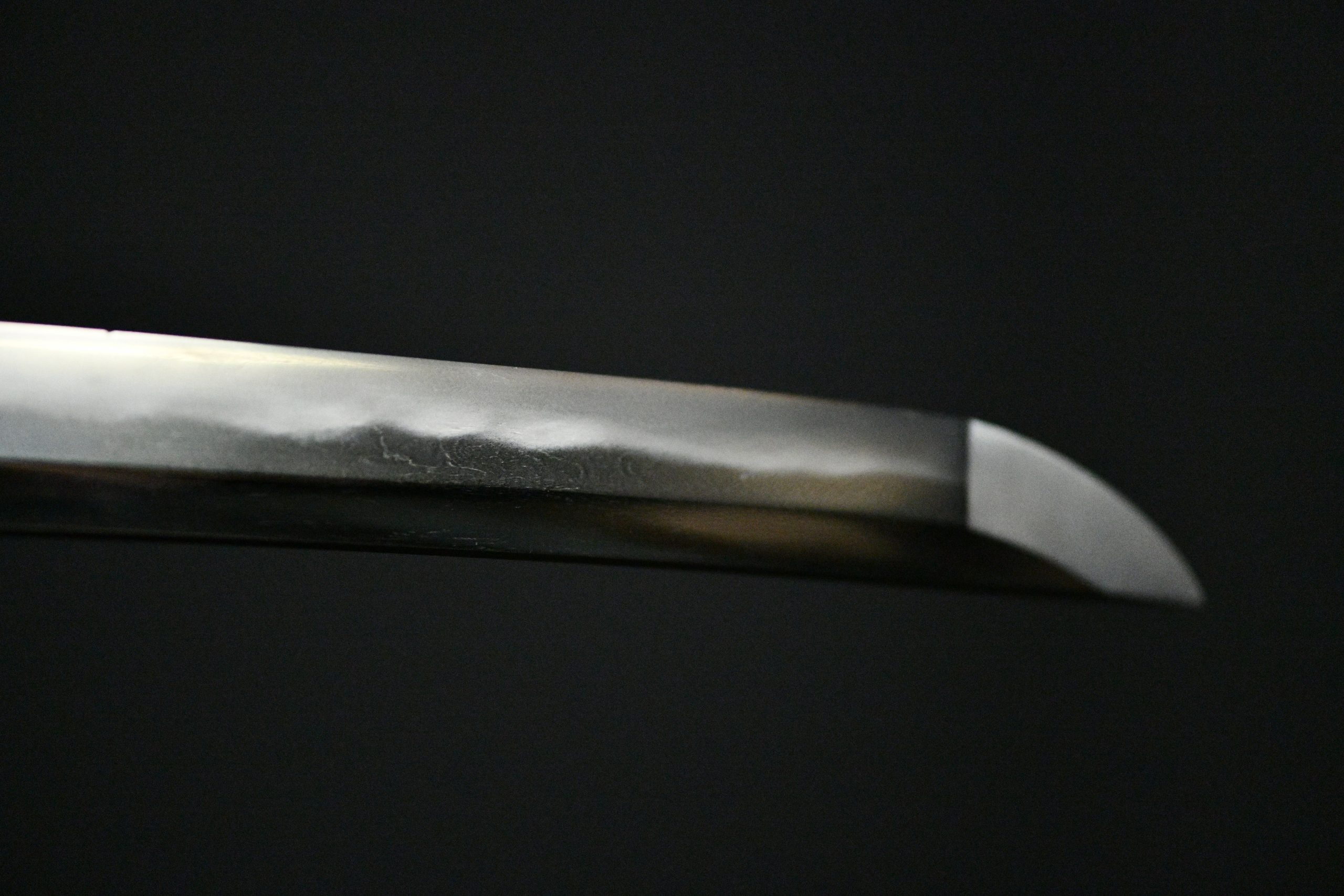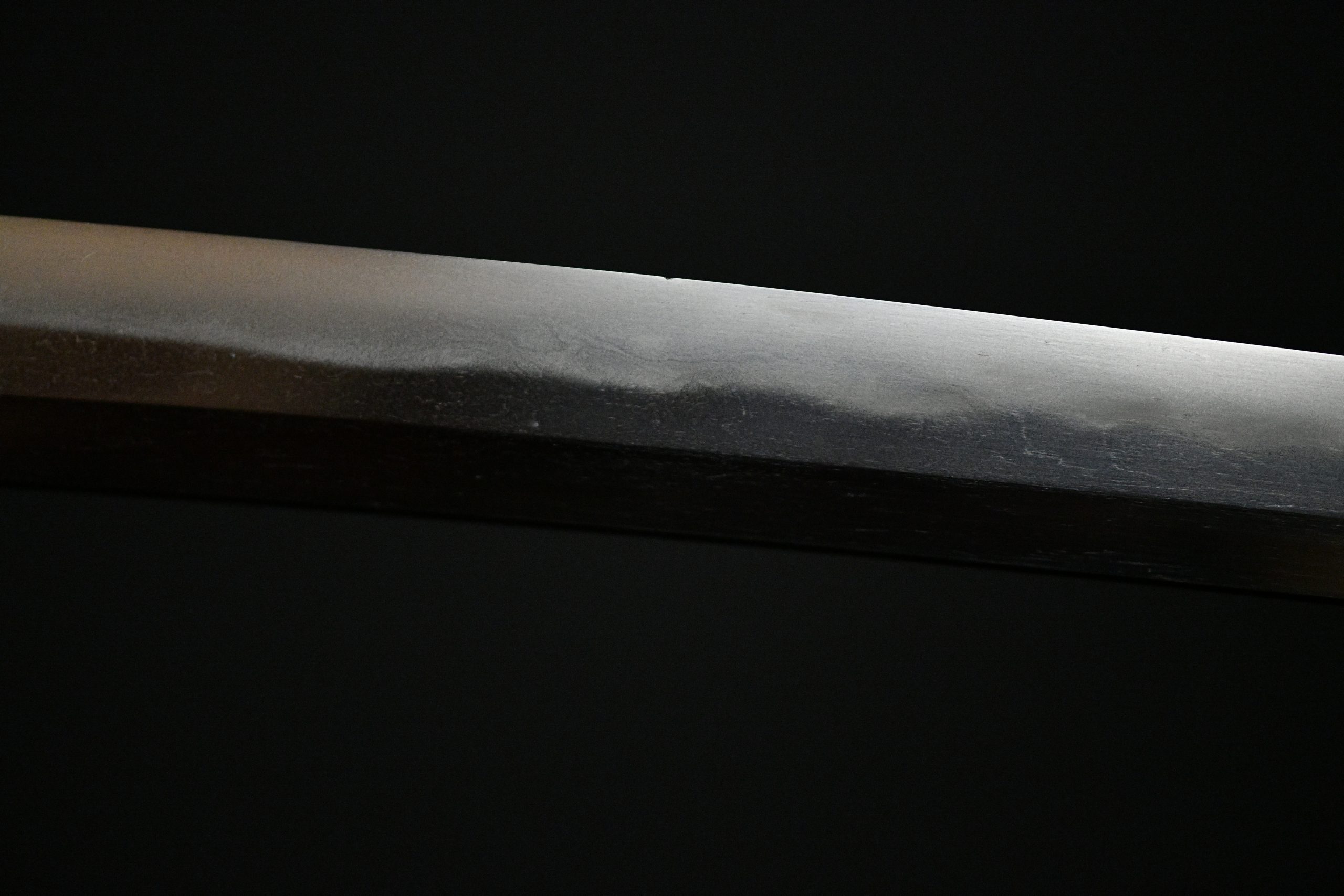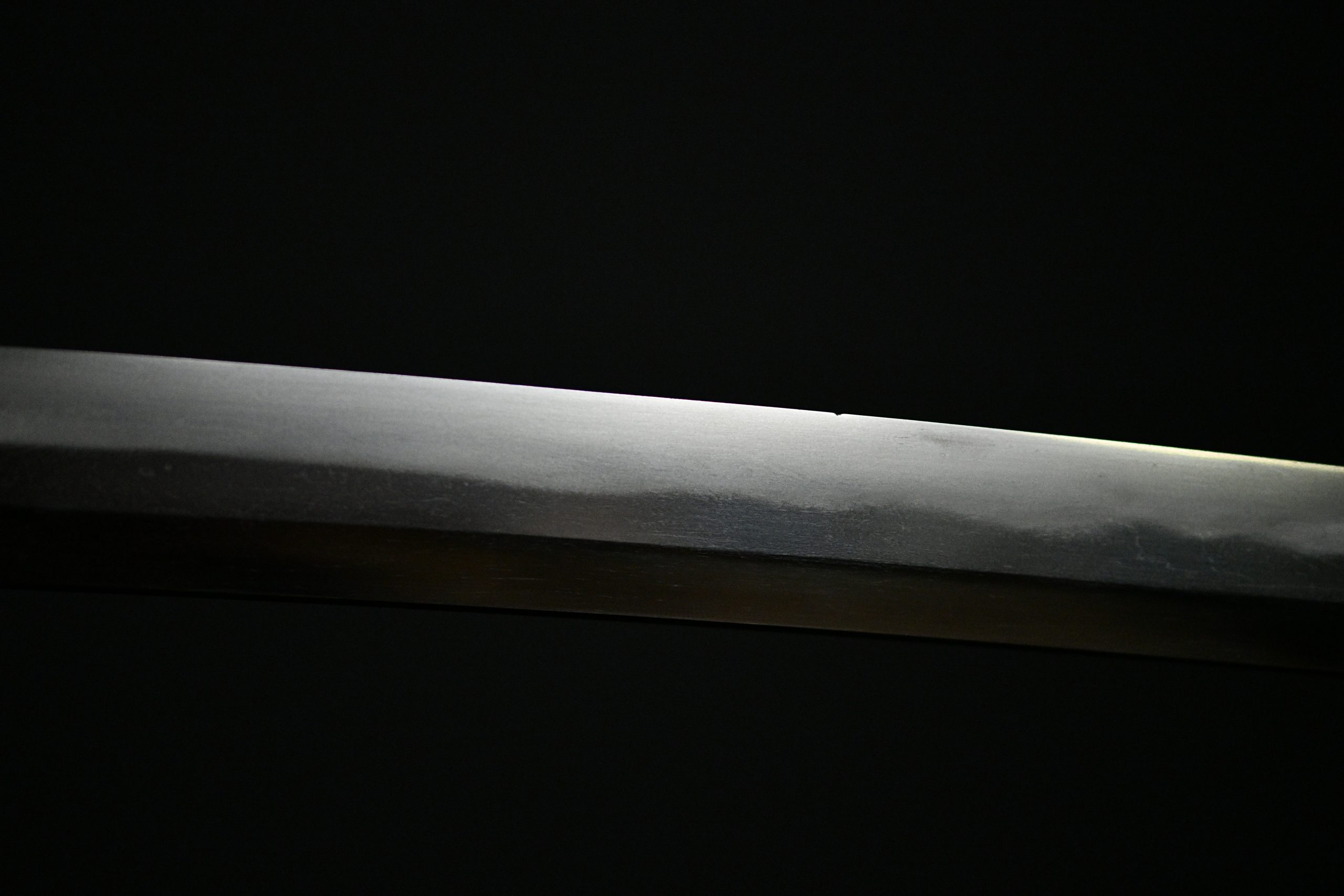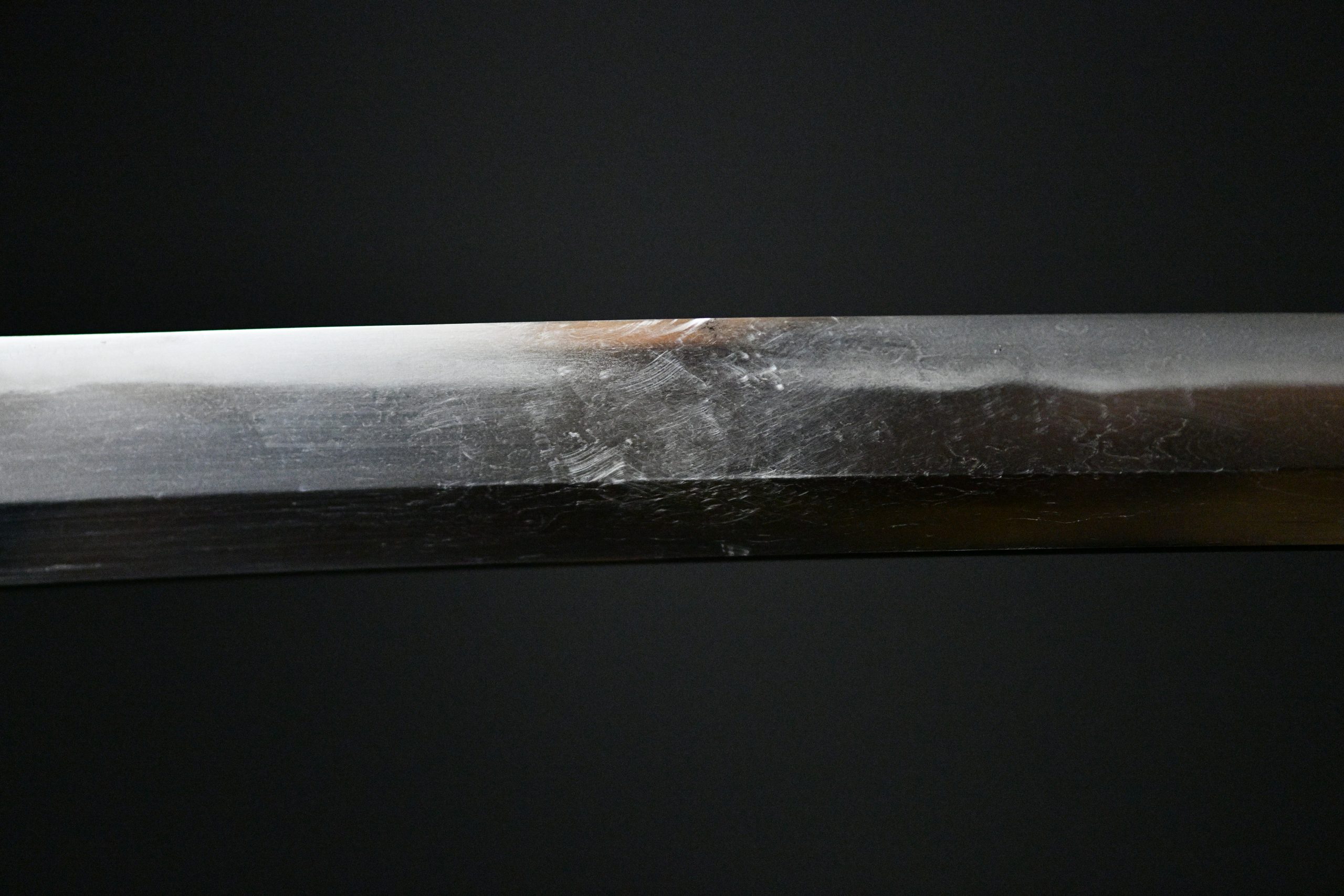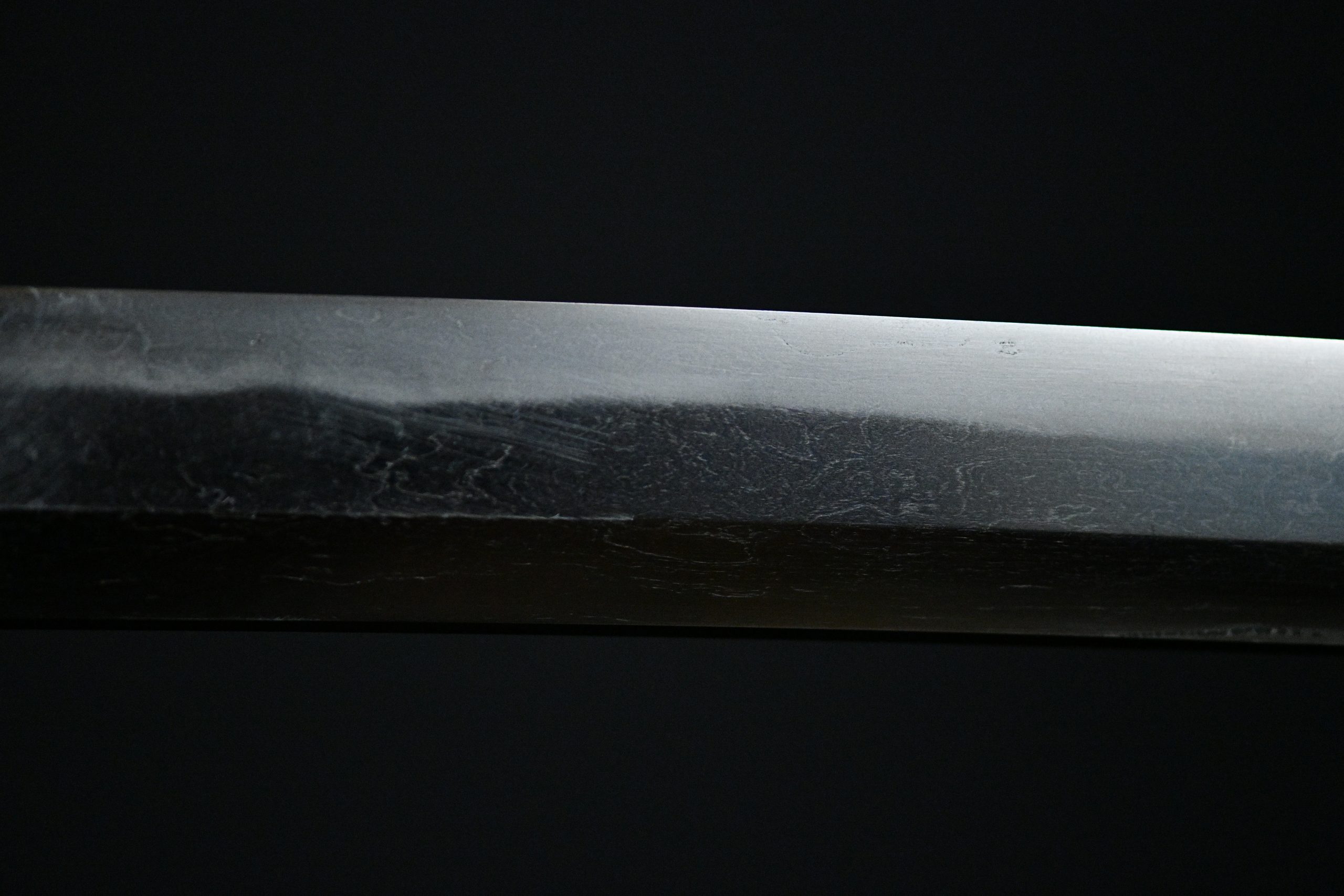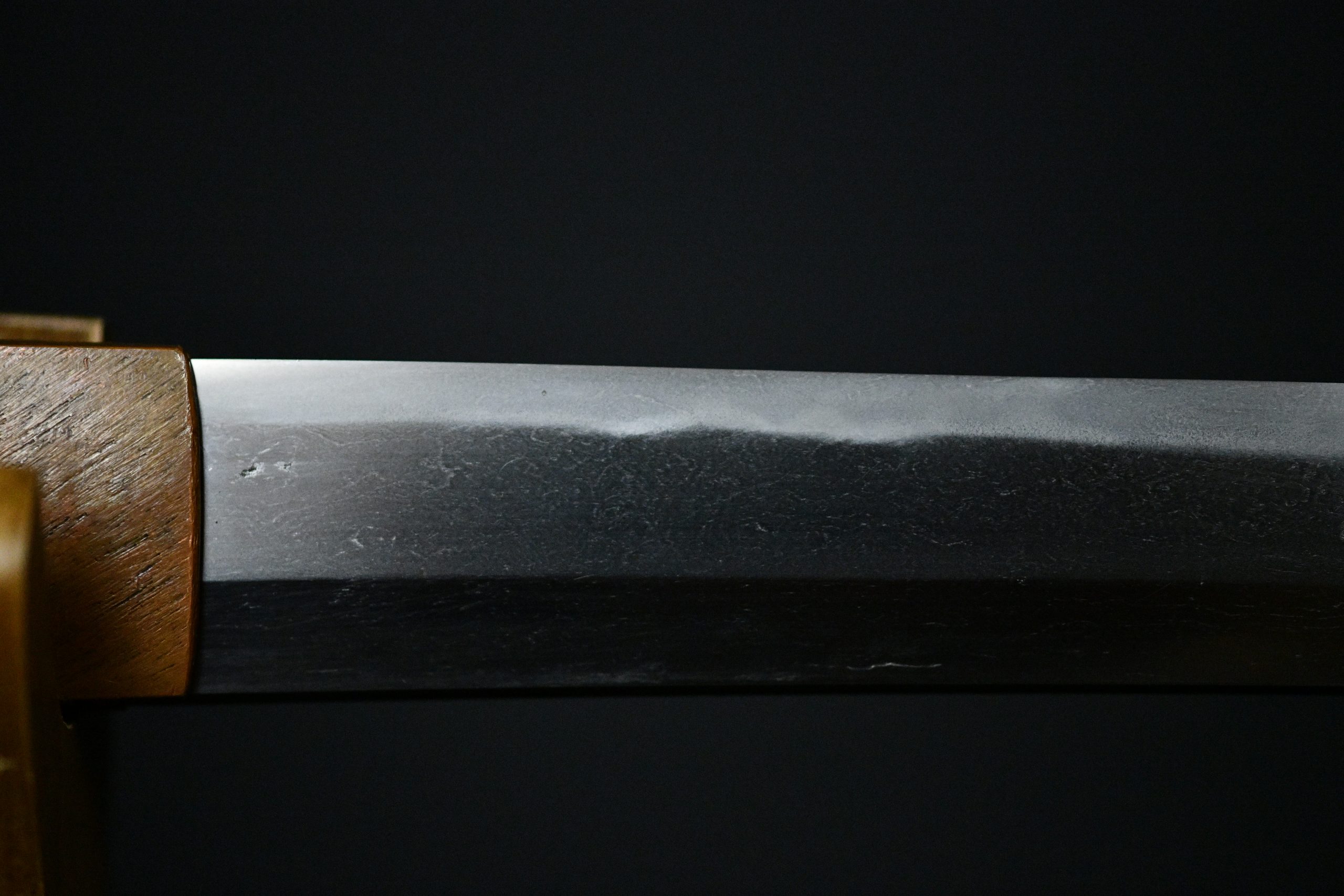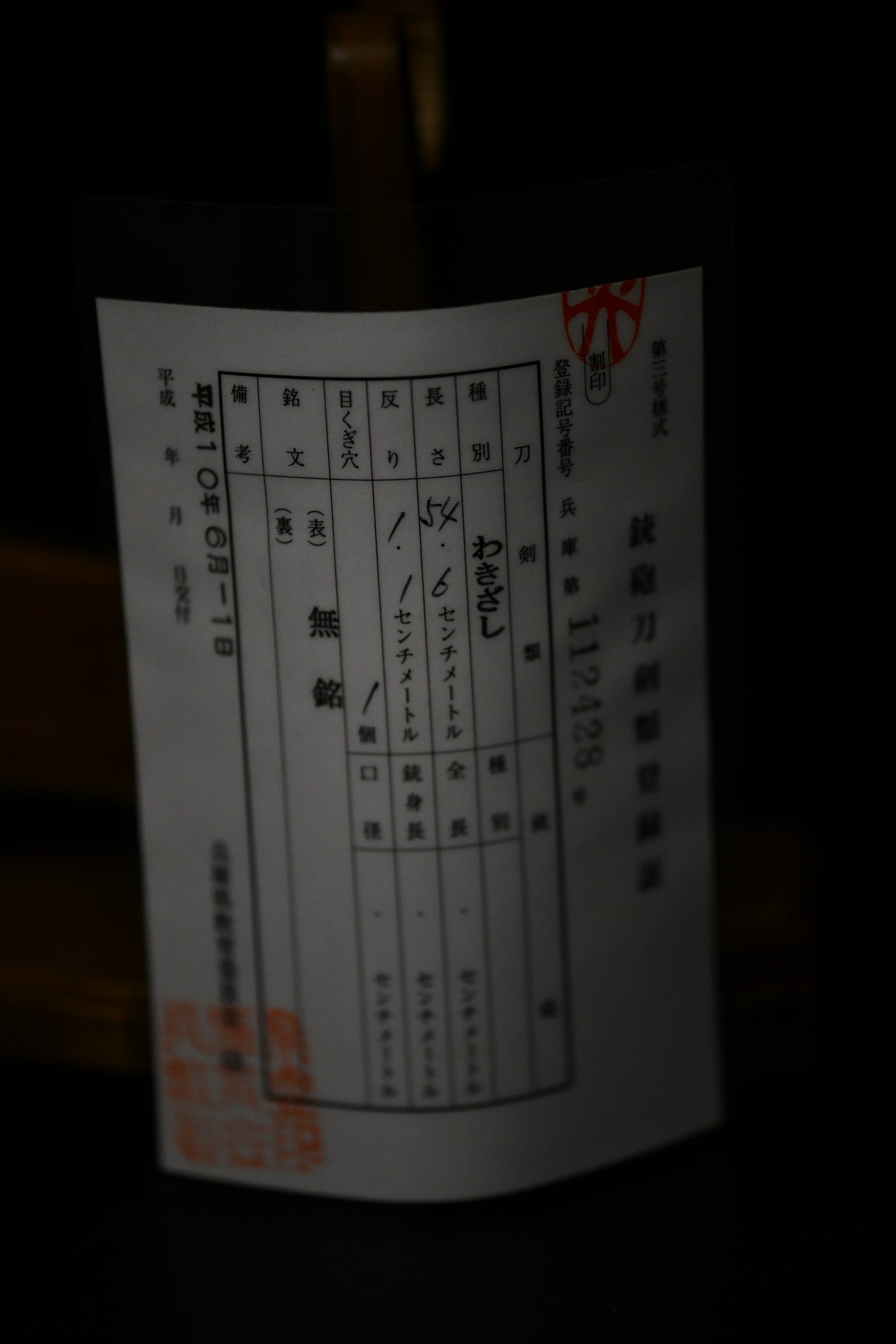Description
ITEM DESCRIPTION:
Comes with kimono or cotton bag. Comes with certificate of supein Nihonto. Comes with prefecture papers. Comes with NBTHK Tokobetsu kicho.
Blade (tōshin)
This Wakizashi is atributed to the mastersmith “Hojyoji Tadateru” from the Edo period, with a blade length (nagasa) of 54.6 cm and a curvature (sori) of 1.1 cm. The blade displays a notare-midare hamon, wavy and lively, with visible internal activities. The hada (jihada) shows a well-forged itame pattern, adding depth and movement to the surface steel. The kissaki is a well-proportioned chu-kissaki. The nakago remains in its original state, with a single mekugi-ana and an old patina consistent with age.
Mounting (koshirae)
The sword comes with a complete koshirae of high artistic value:
Tsuka: covered with white samegawa (ray skin) and wrapped with dark blue silk ito.
Menuki: copper and gold, depicting mythological figures in fine relief.
Fuchi-kashira: decorated with fantastical motifs, copper with gilt details, highlighting the artisan quality.
Tsuba: iron with partial gold inlays, depicting the expressive face of a bearded deity or sage.
Saya: finished in matte black lacquer, sober yet elegant, complementing the fittings.
Shirasaya
The blade is also preserved in a plain wooden shirasaya, ensuring long-term protection of the steel.
Certificates
Official Torokusho (registration in Hyōgo, no. 112438).
NTHK certificate (Showa 47 – 1972), attributing the blade as an Edo-period mumei wakizashi, confirming its authenticity and historical value.
Historical Narrative
This unsigned wakizashi takes us back to the Edo period, when such blades served as the samurai’s sidearm and a status symbol in daily life. Its elegant hamon, with lively activity, reveals the refinement of swordsmithing of the era.
The koshirae, richly decorated with mythological figures and a striking tsuba with a bearded face, represents the deep connection between weaponry and Japanese folklore. The sober saya contrasts with the detailed fittings, creating a harmonious balance between martial function and artistic expression.
The preservation of both koshirae and shirasaya, together with original Japanese certification, enhances its value for collectors and historians alike.
Technical Data Sheet
Type: Wakizashi
Signature: Mumei (unsigned)
Period: Edo
Blade length (nagasa): 54.6 cm
Curvature (sori): 1.1 cm
Koshirae: Complete, black saya, dark blue tsuka-ito, copper/gold menuki, fuchi-kashira with mythological figures, iron tsuba with bearded face.
Shirasaya: Yes
Certificates: Torokusho Hyōgo no. 112438 + NTHK Showa 47
